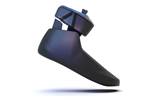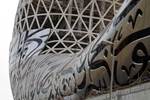Solico engineers sustainable Duplicor composite façade for The Pulse
Using long-term client Holland Composites’ 100% bio-based composite solution, Solico optimized the engineering of the new building’s approximately 1,100 composite elements.
Engineering optimization of the panel laminates used for The Pulse. Photo Credit, all images: Solico
Solico Engineering (Oosterhout, Netherlands), a composites engineering specialist for the architecture, marine, defense and industrial sectors, announces its latest collaboration with long-term client Holland Composites (Lelystad, Netherlands), providing all-composite engineering work for the new 14,000-square-meter Duplicor façade for The Pulse of Amsterdam building. This high-end, mixed-use project, situated in the Zuidas business district, showcases Solico’s expertise in large-scale sustainable engineered composite structures and Holland Composites’ innovative Duplicor technology.
Duplicor is said to combine the free-form design possibilities, low weight and minimal maintenance properties of existing composites with cost-effectiveness, fire resistance, and sustainability. Solico worked alongside Holland composites during the development cycle of the new material solution, providing mechanical testing and material characterization at its in-house test laboratory.
The Pulse façade, designed by MVSA Architects (Amsterdam) and installed by façade contractor De Groot & Visser (Gorinchem), incorporates approximately 1,100 composite elements, each measuring 3.6 × 3.8 meters. Solico engineers analyzed multiple versions of the picture frame-style composite modules that cantilever progressively further outward towards the top of the building. Engineering optimization of the panel laminates, fixing points to the building structure and mounting details for the integrated solar panels, was enhanced by higher-than-normal wind loads predicted by scale model wind tunnel testing at specialists Peutz Netherlands.
Solico has now completed the composite engineering for the Pulse façade and is eagerly following the installation phase of the project as the latest new addition to the Amsterdam skyline continues to take shape.
“The testing done for Holland Composites and De Groot & Visser confirms the new Duplicor technology as a unique composite solution,” says Eric van Uden, managing director of Solico and project lead for the Pulse. “We see potential for Duplicor in a wide range of construction applications, as the combination of structural performance, fire properties and cost it offers is something we’ve not seen before in a lightweight composite — let alone a sustainable 100% bio-based one.”
Sven Erik Janssen, commercial director at Holland Composites, emphasizes the value of Solico’s expertise throughout the Duplicor development cycle, noting, “Having a partner like Solico supporting us with their experience, test results and aging analysis was a major asset for us, providing third-party verification of Duplicor’s long-term mechanical performance. Now, we are ready to revolutionize the architectural composites market.”
Related Content
-
Sustainable Infrastructure Systems creates fiber-reinforced post-consumer plastic structural panels
Australian composites manufacturer offers a scalable building solution, already established in a pedestrian bridge application, to tackle unprocessed soft plastics waste.
-
Fiberglass conduit manufacturer grows into new products, infrastructure applications
Texas-based Champion Fiberglass, a five-time CW Top Shops honoree, expands its success in the fiberglass composite conduit market into new applications and products, looking toward future automation and sustainability initiatives.
-
Plant tour: BeSpline/Addcomp, Sherbrooke, QC, Canada
Composites automation specialist increases access to next-gen technologies, including novel AFP systems and unique 3D parts using adaptive molds.

















